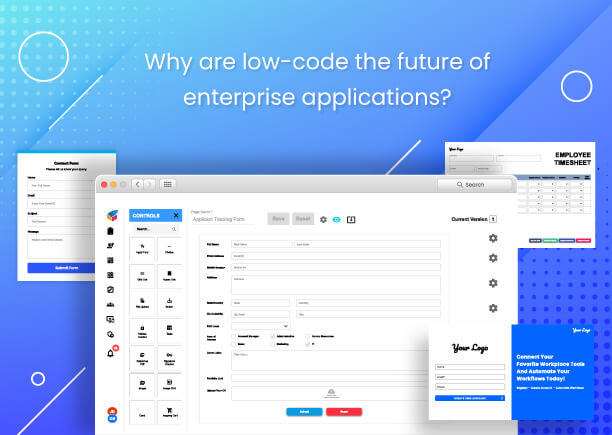Everyone competes with the digital landscape. It has become mandatory for every business to shine in the digital space. If you lag, there are chances that you may get washed away anytime from the competition. That’s the present scenario.
So, where do you fit in here?
And the other way around, if you have been in the digital space, you would have heard of phrases like “no-code” and “low-code” in app development.
With businesses fully focussing on digital technologies, businesses can’t record success without ample applications and codes. So, in a nutshell, every business depends on the applications it relies on. It can be enterprise modes or even customer-focused, CRM, or anything.
Now, one of the major concerns that businesses may struggle with is usability and getting adapted with the tools for seamless business operations.
So, let’s get started with understanding each and everything in detail.
What are Low code, No code applications?
Low code or low code platforms are those applications that help businesses to rely on and develop those apps with a visual approach instead of relying on tons of code that are hard to digest.
When we say low-code and no-code, even though they are used in the same context, there are some unique features in each process that cannot be interchanged.
No-code platforms are very attentive and used to enable business that requires no coding at all, making it easy and reliable to use reusable building blocks. At the same time, low code refers to those that require minimal coding, making it easier for the developers to churn out emerging applications at any instant.
Whether it is Low code or No code platforms your business relies on, your IT team gets full authority over the data access by the users, functionalities, and other systems. However, the data would be protected based on the companies’ security policies. When combined with both, it is of great help for businesses to get ahead with the talent and resources to work on the platforms for seamless operations.
Before we get into the details, let us also understand some of the challenges faced by the business on this contact:
- Bandwidth is a concern: Every business will have a core team functioning on the important business functions and processes which would make them run out of time to look at the enterprise or the customer side applications.
- No budget-friendly options: Most businesses would be running on a limited budget, so it would become difficult and challenging to rely on different apps.
- Expect quick deployment of apps: Who does not want apps quickly? If you rely on more apps, it becomes challenging at times, too. The app complications may result in longer deployment times.
- Required skill set would be a problem: When you rely on apps, it becomes mandatory for the users to get usability training so that it becomes seamless.
What are some of the top reasons why relying on No-code Low code platforms is important?
As we have already seen, low code, no code platforms are all meant to make the best out in terms of simplification of business processes. Here are some of the key reasons to rely on them:
- Makes it easy for businesses to get into digital innovation and huge transformations.
- Boost the responsiveness of the users and makes it easy for businesses to clear off the IT backlogs
- Reduce the dependency of businesses to rely too much on tech-savvy resources and related challenges
- With low code and no code applications, businesses no longer need to worry about the technology churns
It also helps the in-house developers to improve and enhance the processes seamlessly with the help of no-code tools.
On top of everything, it enables businesses to have teams with zero software development expertise to get used to the systems and applications. Apart from that, it helps your IT to have complete governance over the data and its functionality.
What benefits do businesses enjoy with No code platforms?
- Enjoy good development speed: It makes it easy for your business to launch the app quickly and handle seamless business operations.
- Less cost: Along with high speed, businesses also get a chance to enjoy the low cost with the low code or no-code platforms.
- Fewer bugs: Less code leads to fewer bugs and becomes mostly error-free. It helps you to improve the process better.
- Manage your stakeholders better: It helps your business handle the deployment much more easily and in a better way.
Multiple deployments: Can you imagine making apps for multiple platforms simultaneously? On top of that, it helps simplify tasks by many folds to make operations seamless and quicker.
So, what is in it for you?
If you are all set to develop basic enterprise applications that are forecasted for little customizations, with fewer security vulnerabilities and other factors, then it is always a matter of going with Low code and no-code platforms that would make a big difference for your business.
Applications like Yoroflow or similar ones in the market may help you to fine-tune the business requirements in the easiest way possible and work out the best for you. Moreover., user-friendliness of these applications is really commendable. The customer app builder is as simple as it can be so that it can be easily relied upon by businesses.
Having said that, there are some minor limitations too that you may consider while relying on these low-code or no-code platforms:
- Fewer customizations
- Lesser or very limited integrations
But, on top of these limitations, the limitations and the comfort it offers for your business is really commendable. It helps you discover new levels of productivity and efficiency for your business from different angles.
Are you interested in discovering better productivity with the No code platform?




